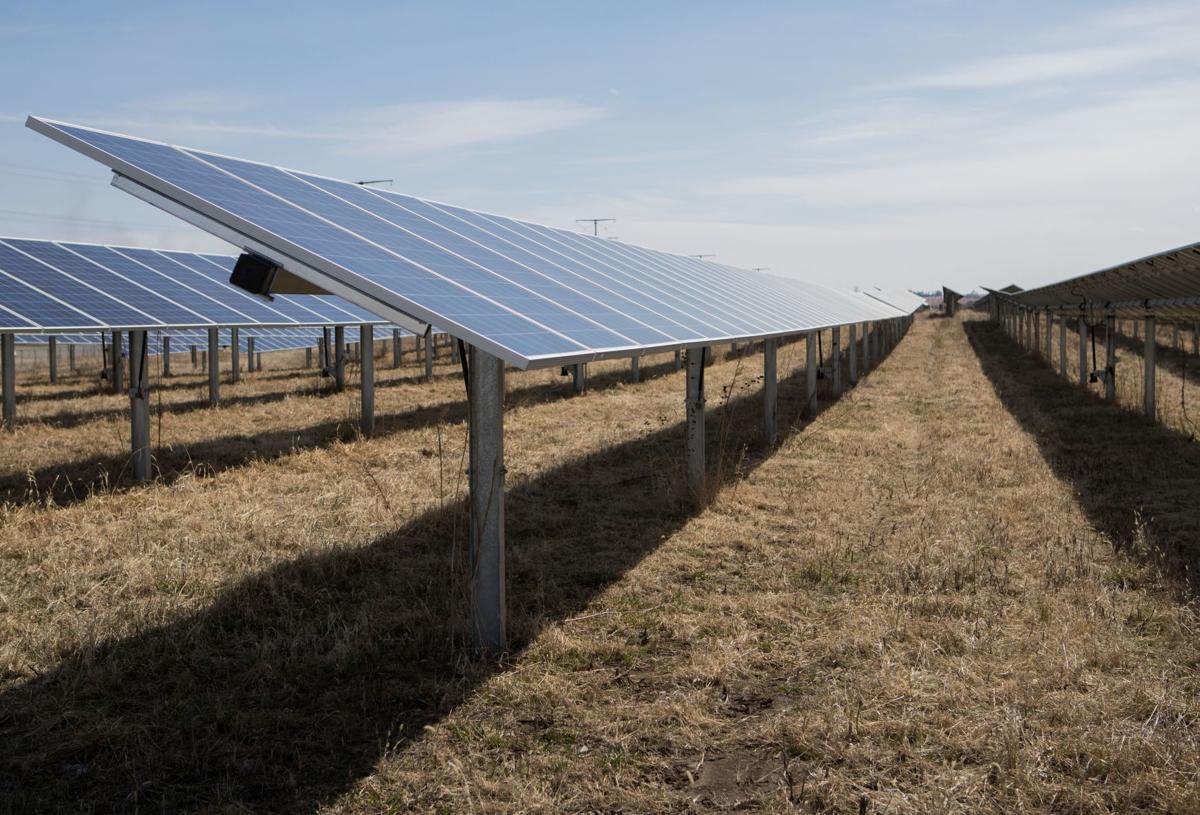The most solar power in state history should flow into the electrical outlets of eastern Nebraska homes and businesses by 2024.

That’s when the Omaha Public Power District aims to finish Nebraska’s largest solar power project, building it in or near the 13 counties OPPD serves . The new solar farms could be located in more than one site.
OPPD management is soliciting bids through mid-January to add OPPD’s first utility-scale solar power, producing 400 megawatts to 600 megawatts of electricity .
Bids received could include options for OPPD to run the solar power units itself with OPPD employees, or to buy the power produced by a private partner, which would operate the units.
If OPPD aims only to buy the power from the partner, it could sign a 20-year deal to make it financially feasible for a private company to assume the costs.
If the utility plans to eventually take over solar production, OPPD could instead choose a bid with an option to buy out its partner.
OPPD last year had the ability to generate nearly 2,700 megawatts of electricity and had contracts to buy hundreds more.
The OPPD board in November approved allowing management to negotiate with potential bidders outside of the public utility’s normal bidding process.
Board members say they expect this change to help management fetch a better price for ratepayers than initial cost estimates of up to $1 billion.
Managers say negotiating this way lets them get more specific with bidders about the utility’s needs than they could in a public bidding process.
It also keeps landowners from overpricing land the utility or contractor might need to purchase, Tim Burke, OPPD president, told The World-Herald.
“We will negotiate and come up with alternatives,” Burke said. “And we will share those with the board.”
Some observers have questioned whether it was wise for OPPD to circumvent a public bidding process.
But management points out that it secured lower-than-projected costs of decontamination work at Fort Calhoun Nuclear Station by using a similar process.
That project appears likely to save about $40 million on deconstructing and storing parts of the former nuclear power plant, Burke said.
“I don’t love the process, but it makes sense,” said Craig Moody, an OPPD board member who is part of a board majority that wants the utility to move away from coal power.
The new solar power project, when complete, will lead to the closure of the last two units burning coal at OPPD’s power plant in north Omaha. The rest burn gas.
The 350 megawatts lost from those coal plants will be replaced by the two new gas plants OPPD will bid out once it decides where to build the solar.
After a World-Herald public records request, OPPD declined to release bid-related documents. Officials cited security exemptions in state statute written to protect critical infrastructure, including the power grid, and proprietary information.
Companies expressing interest in bidding were required to sign nondisclosure agreements to receive the bid-related documents.
Courtney Kennedy, OPPD’s alternative energy program manager, briefed the newspaper on information from the documents.
Here are some highlights about the project from that briefing, other public records and interviews with OPPD management:
OPPD does not expect to raise electricity rates or fees to build and operate the new solar power or gas, Burke said. It wants to offset costs the way it does with other power production, by selling any new power that OPPD customers don’t use.
The solar project will have to be built in Nebraska, under the bid request, and contractors might get knocked down a peg for building in a flood plain.
This new solar power won’t radiate from a single, massive 3,000-acre solar farm. It’ll spread solar power production among two to a dozen sites.
OPPD prefers solar farms that produce 50 to 250 megawatts of electricity, which management says gives ratepayers the most bang for their buck.
A key reason OPPD wants separate solar farms is to reduce the chances that a single disaster, a flood, wind or terror attack, stops solar power production.
Building multiple sites also boosts the chances the sun will shine at some sites, reducing how often OPPD has to use backup power from the gas plants.
OPPD intends to place the solar farms strategically, near OPPD power transmission lines, where they’re needed in the power grid.
The new solar sites will set aside land for future potential battery storage that might make solar power more reliable as battery technology improves.
The new natural gas plants will be able to offer backup power in less than an hour, versus 18 to 20 hours to ramp up the north Omaha coal units.